Played by Gemma Arterton Significant other Zeus | Movie Clash of the Titans | |
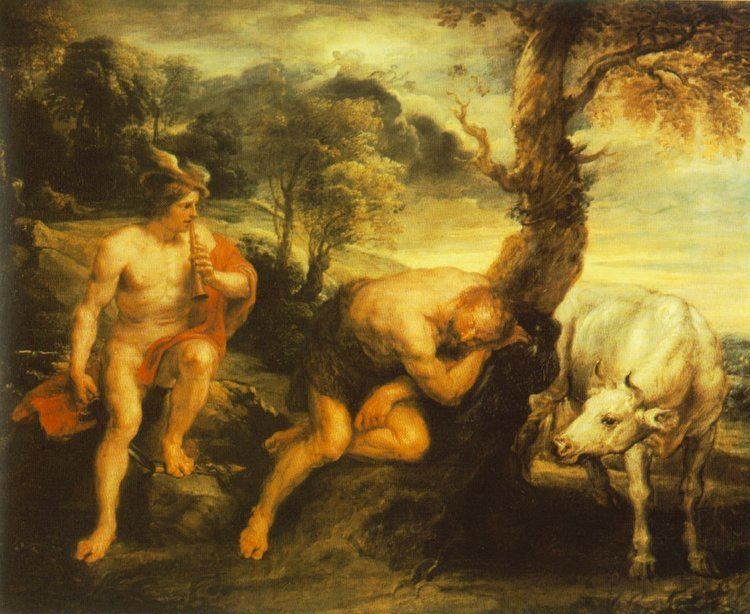 | ||
Similar Danaë, Semele, Europa, Perseus, Andromeda | ||
Io mythology
Io (/ˈaɪ.oʊ/; Ancient Greek: Ἰώ [iːɔ̌ː]) was, in Greek mythology, one of the mortal lovers of Zeus. She was an ancestor of many kings and heroes such as: Perseus, Cadmus, Heracles, Minos, Lynceus, Cepheus, and Danaus. The astronomer Simon Marius conceived a name for one of Jupiter's moons after Io in 1614, coming into use later.
Contents
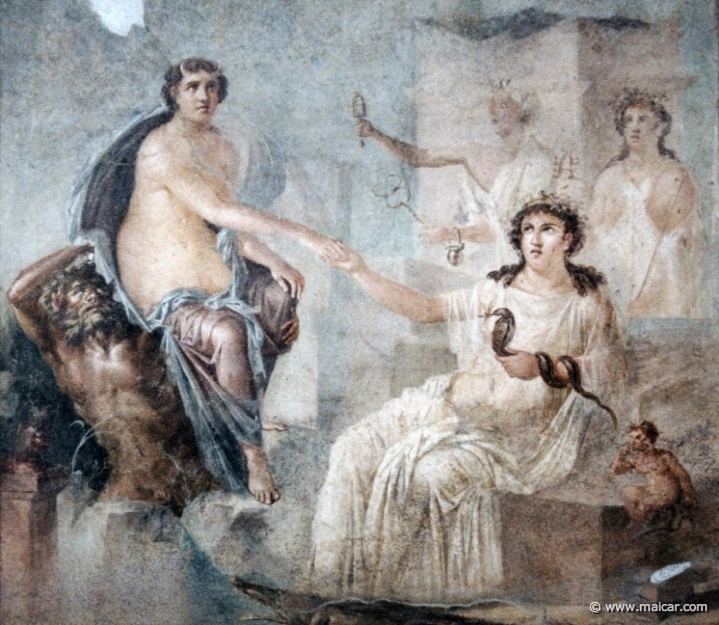
Legend

In most versions of the legend, Io was the daughter of Inachus, though various other purported genealogies are also known. According to some sources her mother was the nymph Melia, daughter of the Oceanus. The 2nd century AD geographer Pausanias also suggests that she is the daughter of Inachus and retells the story of Zeus falling in love with Io, the legendary wrath of Hera, and the metamorphosis by which Io is becoming a cow. At another instant several generations later, Pausanias recounts another Io, descendant of Phoroneus, daughter of Iasus, who himself was the son of Argus and Ismene, the daughter of Asopus, or of Triopas and Sosis; Io's mother in the latter case was Leucane. Io's father was called Peiren in the Catalogue of Women, and by Acusilaus, possibly a son of the elder Argus, also known as Peiras, Peiranthus or Peirasus. Io may therefore be identical to Callithyia, daughter of Peiranthus, as is suggested by Hesychius of Alexandria.
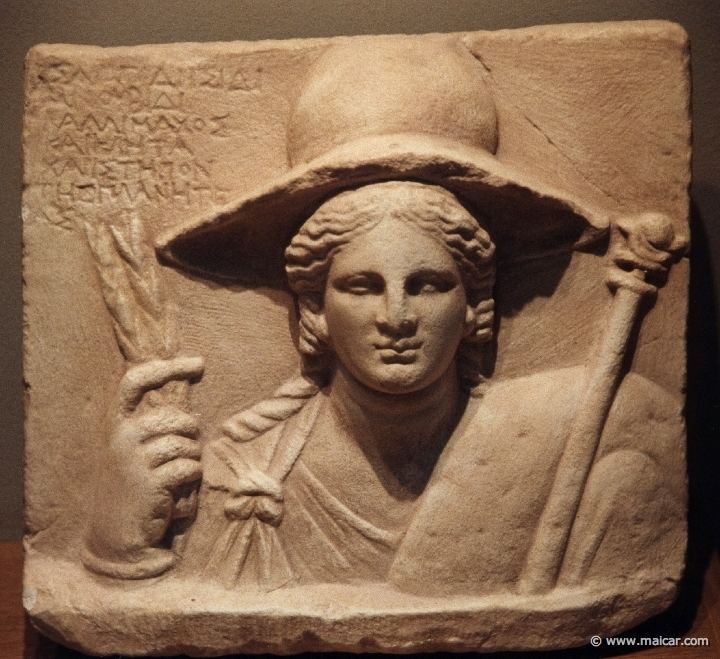
Io was a priestess of the Goddess Hera in Argos, whose cult her father Inachus was supposed to have introduced to Argos. Zeus noticed Io, a mortal woman, and lusted after her. In the version of the myth told in Prometheus Bound she initially rejected Zeus' advances, until her father threw her out of his house on the advice of oracles. According to some stories, Zeus then turned Io into a heifer in order to hide her from his wife; others maintain that Hera herself transformed Io.
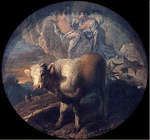
In the version of the story in which Zeus transformed Io, the deception failed, and Hera begged Zeus to give her the heifer as a present, which, having no reason to refuse, he did. Hera then sent Argus Panoptes, who had 100 eyes, to watch Io and prevent Zeus from visiting her, and so Zeus sent Hermes to distract and eventually slay Argus. According to Ovid, he did so by first lulling him to sleep by playing the panpipes and telling stories. Zeus freed Io, still in the form of a heifer.
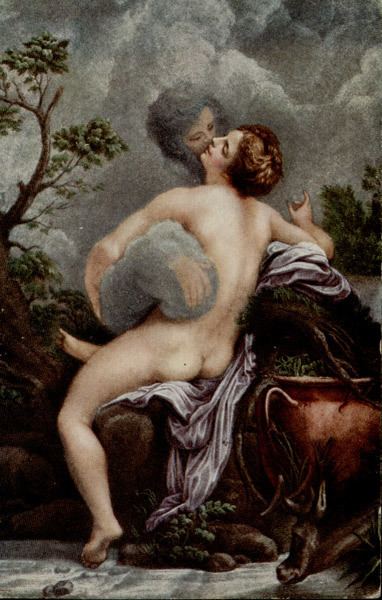
In order to exact her revenge, Hera sent a gadfly to sting Io continuously, driving her to wander the world without rest. Io eventually crossed the path between the Propontis and the Black Sea, which thus acquired the name Bosporus (meaning ox passage), where she met Prometheus, who had been chained on Mt. Caucasus by Zeus. Prometheus comforted Io with the information that she would be restored to human form and become the ancestress of the greatest of all heroes, Heracles (Hercules). Io escaped across the Ionian Sea to Egypt, where she was restored to human form by Zeus. There, she gave birth to Zeus's son Epaphus, and a daughter as well, Keroessa. She later married Egyptian king Telegonus. Their grandson, Danaos, eventually returned to Greece with his fifty daughters (the Danaids), as recalled in Aeschylus' play The Suppliants.
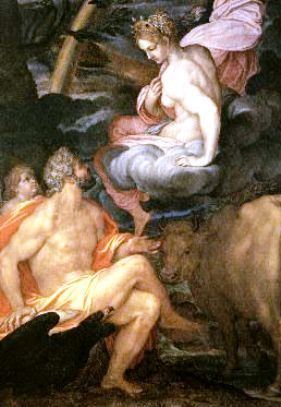
The myth of Io must have been well known to Homer, who often calls Hermes Argeiphontes, meaning "Argus-slayer." Walter Burkert notes that the story of Io was told in the ancient epic tradition at least four times of which we have traces: in the Danais, in the Phoronis— Phoroneus founded the cult of Hera, according to Hyginus' Fabulae 274 and 143—in a fragment of the Hesiodic Aigimios, as well as in similarly fragmentary Hesiodic Catalogue of Women. A mourning commemoration of Io was observed at the Heraion of Argos into classical times.
The ancients connected Io with the Moon, and in Aeschylus' Prometheus Bound, where Io encounters Prometheus, she refers to herself as "the horned virgin", both bovine and lunar.
In popular culture
In the 2010 film Clash of the Titans, Io was portrayed by British actress Gemma Arterton. The character was a major deviation from Greek mythology: instead of being Zeus' lover, she was portrayed as a guide and later the lover of Perseus. Her transformation into a cow was also not mentioned. Instead, she was "cursed" with agelessness for refusing a god's romantic advances. Despite confirming her return for Wrath of the Titans in September 2010, Arterton did not reprise her role for unknown reasons. Instead, it is revealed that Io died shortly after Persus's battle with Medusa but later resurrected by Zeus, but later died before the beginning in Wrath of the Titans, as Perseus is seen placing stones on her grave.
Australian writer Ursula Dubosarsky's play The Girl Who Was Turned Into A Cow, first published in the NSW School Magazine, is based on the myth of Io.
In the video game Persona 3, Io is the starting persona of Yukari Takeba.
